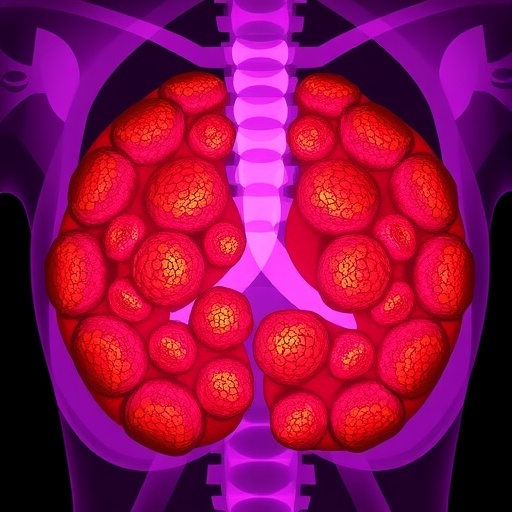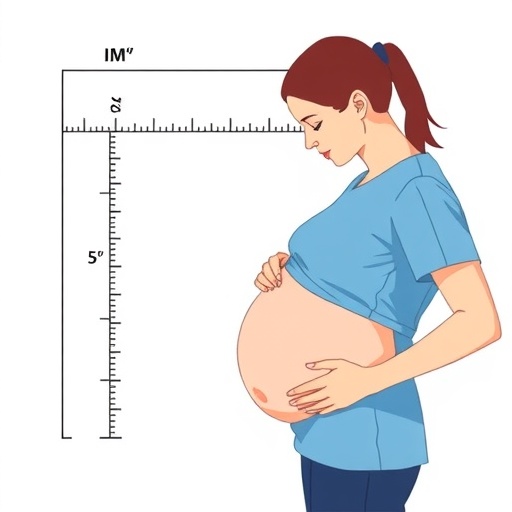Recent advancements in the field of pediatric oncology have led to significant improvements in treatment strategies, particularly for diverse malignancies such as Wilms tumor. This childhood kidney cancer, primarily affecting children aged 3 to 4 years, has been the subject of extensive research, aimed at understanding its prognostic factors to enhance long-term survival outcomes. A recent retrospective study conducted by Shao et al. sheds light on critical factors influencing survival rates among children diagnosed with this tumor, offering insights that may guide future therapeutic approaches.
The research team meticulously analyzed data spanning several years from numerous pediatric cases, affording a comprehensive view of Wilms tumor’s prognostic landscape. The study incorporates various demographic and clinical parameters that could potentially affect the prognosis. These include the age at diagnosis, tumor stage, histological subtype, and the presence of metastasis at the time of diagnosis. Such parameters play a vital role in determining not only immediate treatment options but also long-term survival chances for affected children.
One of the pivotal factors highlighted in this study is the age of the patient at the time of diagnosis. It has been consistently observed that younger children, especially those diagnosed before the age of 2, may have a more favorable prognosis compared to older counterparts. This finding emphasizes the importance of early detection and intervention, showcasing how age can be a significant determinant in the therapeutic strategy adopted by oncologists.
The stage of the Wilms tumor at diagnosis is another critical aspect underscored by the research findings. The classification of Wilms tumors into various stages allows for an understanding of the tumor’s extent and its spread. Higher-stage tumors typically correlate with poorer survival outcomes, arresting treatment options. Consequently, acquiring timely and accurate staging through imaging and biopsies is vital in tailoring the best possible management protocols for patients.
Additionally, the histological subtype of Wilms tumor has garnered attention in this investigation. Different histological variants of Wilms tumors, such as the classic triphasic type and the heterogenous variants, may exhibit distinct clinical behaviors. These variations necessitate different therapeutic approaches, further underscoring the complexity of diagnosing and treating this pediatric malignancy. If certain histological types are associated with better prognoses, they could direct the focus towards personalized treatment plans aimed at maximizing effectiveness while minimizing the traumatic effects of aggressive therapies on young patients.
The presence of metastasis at diagnosis has traditionally been associated with poorer outcomes in many cancers, and Wilms tumor is no exception. The study’s findings reinforce the correlation between metastatic disease and survival rates, emphasizing the need for vigilant screening protocols aimed at early identification of metastasis. Such measures may significantly influence the long-term survival rates of patients, offering hope for improved outcomes through aggressive treatment regimes at earlier stages of disease progression.
Beyond these critical factors, the study reveals several other biologic and genetic markers that could serve as prognostic indicators for Wilms tumor. Variables such as the molecular characteristics of the tumor, including chromosomal aberrations and gene mutations, have emerged as pivotal components that oncologists may consider when formulating treatment plans. This molecular insight into tumor behavior showcases the interplay between genetic predispositions and tumor aggressiveness, marking a significant stride towards more targeted therapies in pediatric oncology.
Moreover, understanding patient demographics, including socio-economic status and geographical location, can have substantial implications for treatment accessibility and outcomes. The study suggests that disparities in healthcare access can influence the timely detection and treatment of Wilms tumor, subsequently impacting survival rates. Healthcare systems must address these disparities to ensure equitable access to diagnostic and therapeutic services for all children, regardless of their socio-economic background.
The implications of these findings reach far beyond the immediate scope of individual diagnosis and treatment plans. By enhancing the understanding of prognostic factors associated with Wilms tumor, this research lays the groundwork for developing new clinical guidelines and fostering a future where personalized medicine becomes the standard approach. As researchers continue to unravel the complexities of Wilms tumor, they pave the way for innovations that not only improve longevity but also the overall quality of life for pediatric patients battling this formidable disease.
As advancements continue to emerge from ongoing research, collaborations between oncologists, researchers, and geneticists will be paramount. The integration of multidisciplinary approaches could foster the development of comprehensive treatment algorithms that address both the biological complexities of the tumor and the unique needs of the pediatric population. Such collaborative efforts are essential in harnessing the full potential of current knowledge and transforming it into practice that can significantly improve survival rates.
Furthermore, ongoing innovations in technology and treatment modalities offer optimism in the fight against cancers like Wilms tumor. For instance, the rise of immunotherapy and targeted gene therapies represents a beacon of hope, potentially offering less invasive intervention strategies tailored to the unique characteristics of each tumor. As scientific exploration evolves, the possibility of developing less toxic treatments that provide the same or improved survival outcomes remains a top priority for researchers and clinicians alike.
The significance of this research cannot be understated. With pediatric cancers being a critical concern, understanding the factors influencing outcomes in Wilms tumor is a step forward in addressing the broader challenges associated with childhood malignancies. As the medical community learns from investigations like that of Shao et al., healthcare providers can better strategize interventions, ultimately leading to the enhancement of care and support provided to young patients and their families during such challenging times.
In conclusion, the study presents a comprehensive overview of the prognostic factors that influence long-term survival in Wilms tumor patients. The findings from Shao et al. underscore the multifaceted nature of this disease and shine a light on the importance of personalized approaches in treatment. As research continues to unfold, the incorporation of these insights into clinical practice stands to revolutionize pediatric oncology, marking a pivotal point in the ongoing battle against childhood cancers. As we step into a future where understanding and technology converge, the hope for improved outcomes for children battling Wilms tumor becomes ever more attainable.
Subject of Research: Prognostic factors for long-term survival in Wilms tumor.
Article Title: Prognostic factors for long-term survival in Wilms tumor: a retrospective study.
Article References:
Shao, K., Zhu, H., Lin, X. et al. Prognostic factors for long-term survival in Wilms tumor: a retrospective study.
BMC Pediatr 25, 908 (2025). https://doi.org/10.1186/s12887-025-06289-x
Image Credits: AI Generated
DOI: https://doi.org/10.1186/s12887-025-06289-x
Keywords: Wilms tumor, pediatric oncology, prognostic factors, childhood cancer, long-term survival.
Tags: age at diagnosis and cancer prognosischildhood kidney cancer researchdemographic parameters in cancer prognosishistological subtype significancelong-term survival outcomes in childrenmetastasis at diagnosis in Wilms tumorpediatric oncology advancementsprognostic factors in Wilms tumorretrospective study on pediatric cancerstreatment strategies for Wilms tumortumor stage and survival ratesWilms tumor survival factors





